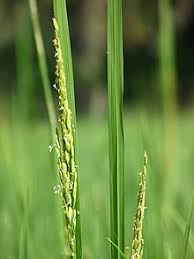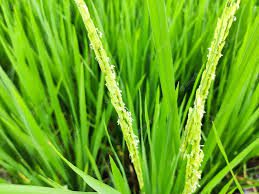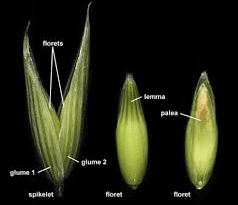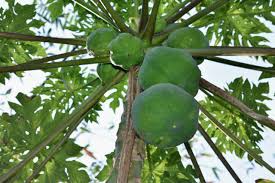Rice Glumes: Economic Importance, Uses and By-Products
Rice glumes are an essential component of the rice plant’s reproductive structures, specifically within the grass family (Poaceae). Glumes are modified leaves that play a crucial role in protecting the developing rice grains (seeds) during their growth and development. They are typically found in pairs at the base of each spikelet, which is the basic unit of the rice inflorescence.
Glumes are located at the base of the spikelet, which is a small cluster of florets arranged along the central stem of the rice inflorescence. The inflorescence is the flowering part of the rice plant. Each spikelet contains two glumes. The glumes are essentially modified leaves and are usually papery or membranous in texture. They can be of varying sizes, shapes, and colors depending on the rice variety.
The primary function of the glumes is to protect the developing rice grains (kernels or seeds) within the spikelet. They enclose and shield the rice florets, providing a protective covering that helps prevent damage from external factors such as pests, diseases, and environmental conditions.
Glumes can exhibit considerable variation in appearance among different rice varieties. Some glumes may have awns (long bristle-like structures) attached to them, which further aid in protection and seed dispersal. During rice harvesting, the glumes are typically removed along with the husk or hull, leaving behind the edible rice grains.
Rice glumes are modified protective leaves located at the base of each spikelet in the rice inflorescence. They serve a critical role in safeguarding the developing rice grains and aiding in seed dispersal, contributing to the overall reproductive success of the rice plant.
The Economic Importance and Uses of Rice Glumes

Rice glumes, also known as rice hulls or husks, are the protective outer covering of rice grains. They have several economic importance and uses, primarily in agriculture, industry, and various applications.
Here are some of the key economic importance and uses of rice glumes:
1. Mulching: Rice glumes can be used as mulch in agriculture to help retain soil moisture, control weed growth, and improve soil structure. They act as a natural barrier, preventing the loss of water through evaporation and reducing the need for irrigation.
2. Composting: Rice glumes are rich in carbon and can be added to compost piles to enhance organic matter content and improve soil fertility. They decompose slowly, providing a steady release of nutrients to plants.
3. Biomass Energy: Rice glumes can be used as a biomass energy source. They can be burned to produce heat and energy, serving as a renewable alternative to fossil fuels. This is particularly important in rural areas where rice cultivation is prominent.
4. Livestock Feed: Rice glumes can be included in livestock feed formulations, especially for ruminant animals. While they have lower nutritional value compared to the rice grain itself, they still contribute dietary fiber and bulk to the feed.
5. Building Materials: Rice glumes can be processed and used as a component in producing building materials like boards, panels, and insulation. They provide thermal insulation and contribute to sustainability by utilizing agricultural byproducts.
6. Silicon Production: Rice glumes contain high levels of silica, which can be extracted and used in the production of silicon-based products, such as silicon wafers for electronics.
7. Growing Medium: Rice glumes can be used as a substrate for growing plants, particularly in hydroponics or soilless cultivation. They provide support for plant roots and help maintain moisture levels.
Read Also: Rice Rachis: Economic Importance, Uses and By-Products
8. Handicrafts: In some cultures, rice glumes are used in traditional handicrafts, such as making baskets, hats, and other woven products.
9. Decorative Items: Rice glumes can be dyed and used to create decorative items such as ornaments, wall hangings, and other artistic pieces.
10. Soil Erosion Control: Rice glumes can be used in erosion control and land reclamation projects. They help stabilize soil on slopes and prevent erosion by acting as a protective layer.
11. Packaging Material: Rice glumes can be processed to create biodegradable packaging materials, offering an environmentally friendly alternative to plastic packaging.
12. Scientific Studies: Rice glumes are often used in scientific studies and experiments due to their availability and unique properties. They have been studied for various purposes, including agricultural waste management, nanotechnology, and material science.
13. Substrate: Rice glumes can be used as a substrate for growing certain types of mushrooms, such as oyster mushrooms. The glumes provide a nutritious base for mushroom mycelium to grow and develop.
14. Biochar: Rice glumes can be converted into biochar through pyrolysis, a process that involves heating organic materials in the absence of oxygen. Biochar is a type of charcoal that can be added to soil to improve its structure, water retention, and nutrient-holding capacity.
15. Water Filtration: Rice glumes can be used in water treatment processes as a natural filtration medium. They can help remove impurities and contaminants from water due to their porous structure.
16. Oil Absorbent: Rice glumes have been explored for their potential use as oil absorbents in cases of oil spills. The absorbent properties of the glumes can help contain and clean up oil-contaminated areas.
17. Environmental Cleanup: Certain plants have the ability to accumulate heavy metals and pollutants from the soil in their tissues. Rice glumes, when used as a component in phytoremediation projects, can help remove toxins from contaminated soils.
18. Herbal Remedies: In some traditional medicine practices, rice glumes have been used as an herbal remedy for various health issues. While modern scientific research on these uses is limited, they are still valued in some cultural contexts.
19. Construction Sites: Rice glumes can be used to prevent soil erosion on construction sites, providing a temporary protective layer until vegetation can be established.
20. Agricultural Sustainability: Incorporating rice glumes into agricultural systems can contribute to nutrient cycling and organic matter accumulation in the soil, enhancing soil health and fertility. Additionally, the carbon content of rice glumes can contribute to carbon sequestration in the soil.
21. Bioplastic Development: Researchers are exploring the potential of rice glumes as a source of raw materials for bioplastics, which are eco-friendly alternatives to conventional plastics.
22. Bioethanol: Rice glumes can be used in the production of bioethanol, a renewable and cleaner-burning alternative to gasoline, through fermentation and distillation processes.
The Products and By-products That Can Be Derived From Rice Glumes
Rice glumes, also known as husks or hulls, are the protective outer layers of rice grains. They are typically removed during the rice milling process to access the edible rice kernel. However, rice glumes have several potential uses and can be processed to produce various products and by-products.
Here are some examples:
1. Rice Bran: Rice bran is a by-product obtained from the outer layer of the rice grain, including the glumes. It is rich in nutrients, such as dietary fiber, vitamins, minerals, and antioxidants. Rice bran oil is extracted from rice bran and is used for cooking and as a source of healthy fats. Additionally, rice bran can be used as livestock feed or in the production of food supplements.
2. Rice Husk Ash: Rice husk ash is obtained by burning rice husks at high temperatures. It contains silica, which has various industrial applications. For instance, it can be used in construction materials, such as concrete and bricks, to improve their strength and durability. It can also be used in the production of ceramics, as a raw material for silicon production, and in the manufacturing of silicon carbide.
3. Animal Feed: Rice glumes, though not commonly used, can be processed and included in animal feed formulations. They provide dietary fiber and some nutrients to livestock. Proper processing may involve grinding, pelletizing, or other techniques to make the glumes more digestible and palatable for animals.
4. Mulching Material: Rice glumes can be used as mulch in gardening and agriculture. They help retain soil moisture, control weed growth, and protect the soil from erosion. As the glumes break down over time, they contribute organic matter to the soil.
5. Biofuel Production: Rice husks can be used as a biomass feedstock for biofuel production. They can be converted into biofuels like bioethanol or used for generating thermal energy through combustion or gasification processes.
6. Biodegradable Packaging Material: Rice glumes can be processed into biodegradable packaging materials. They have potential applications in creating sustainable alternatives to single-use plastics and other non-biodegradable materials.
7. Composting: Rice husks can be composted along with other organic materials to create nutrient-rich compost that can improve soil structure and fertility.
8. Cattle Bedding: In some regions, rice glumes are used as bedding material for cattle and other livestock. They provide comfort and insulation for animals in barns or shelters.
Read Also: Rice Panicles: Economic Importance, Uses and By-Products
9. Paper and Cardboard Production: Rice glumes can be used as a source of fiber for paper and cardboard production. Proper pulping and processing techniques can yield cellulose fibers that are suitable for making paper products.
10. Particleboard and Composite Materials: Rice husks can be combined with other binders and materials to produce particleboard or composite panels. These panels can be used in furniture, cabinetry, and interior design applications.
11. Soil Erosion Control: By spreading rice glumes on bare or erodible soil, erosion can be minimized. The glumes provide a protective layer that helps stabilize the soil and prevent surface runoff.
12. Biomass Energy Generation: Rice husks can be burned to generate thermal energy, which can be used for electricity generation or heating purposes. This can contribute to renewable energy production and reduce the reliance on fossil fuels.
13. Silica Gel Production: Silica gel, a desiccant commonly used for moisture absorption in various industries, can be produced from rice husk ash. The ash’s high silica content makes it suitable for this application.
14. Biogas Production: Rice husks can be utilized in anaerobic digestion processes to produce biogas, a mixture of methane and carbon dioxide. Biogas can be used for cooking, heating, or electricity generation.
15. Nutritional Supplements: Processed rice bran, including glumes, can be used as a source of nutritional supplements. It can be incorporated into dietary supplements, functional foods, or animal feed formulations.
It is important to note that the utilization of rice glumes may vary based on local agricultural practices, technological advancements, and market demand. As sustainability and environmental concerns grow, finding innovative ways to use rice glumes can contribute to reducing waste and promoting the circular economy.
In summary, rice glumes have a diverse range of economic importance and uses, spanning agriculture, industry, animal husbandry, and even creative and innovative applications. Their potential extends beyond just being a byproduct of rice production, contributing to sustainability and resource optimization in various sectors.
Read Also: Importance and Benefits of Smart Farming









